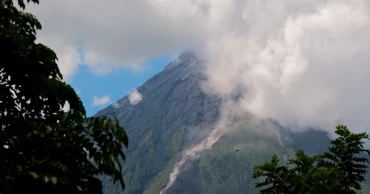Philippines
Bangladesh seeks greater Filipino investment, ASEAN partnership
Bangladesh has underscored the prospects for increased Filipino investment in its emerging sectors and reiterated its aspiration to become a Sectoral Dialogue Partner of the Association of Southeast Asian Nations (ASEAN).
Bangladesh and the Philippines held the third round of Foreign Policy Consultations (FPC) in Manila on Tuesday (4th November 2025), marking the first session after a six-year gap.
The meeting was co-chaired by Ambassador Dr Md Nazrul Islam, Secretary (East & West) of the Ministry of Foreign Affairs of Bangladesh, and Ma. Hellen B. De La Vega, Undersecretary for Policy at the Department of Foreign Affairs of the Philippines. Leo M. Herrera-Lim, Undersecretary for Migration Affairs, also joined the session.
The Bangladesh delegation included Mohammad Sarwar Mahmood, Ambassador of Bangladesh to the Philippines, officials from the Ministry of Foreign Affairs and the Embassy of Bangladesh in Manila, along with a representative from Bangladesh Bank.
BGCCI welcomes new German Ambassador; looks for boost in investment in tech, energy
The Philippine delegation comprised senior officials from the Department of Foreign Affairs, Department of Justice, Department of Agriculture, Department of Migrant Workers, Commission on Higher Education, Technical Education and Skills Development Authority, Board of Investment, Anti-Money Laundering Council, and the Civil Aeronautics Board, joined by Nina P. Cainglet, Ambassador of the Philippines to Bangladesh.
Both sides reviewed the progress since the second FPC and explored opportunities for deeper cooperation in political relations, trade and investment, cybersecurity, the blue economy, education, skills development, culture, defence cooperation through training exchanges and knowledge-sharing, people-to-people connectivity, labour and migration governance.
They also discussed matters of mutual interest in regional and multilateral affairs, including the situation of the Forcibly Displaced Myanmar Nationals (FDMNs).
VFS Global launches Netherlands visa services with state-of-the-art centre in Dhaka
Discussions were held in a warm, constructive, and forward-looking atmosphere, according to the Ministry of Foreign Affairs.
The meeting concluded with the signing of a Memorandum of Agreement on Maritime Cooperation on the Recognition of Certificates under the STCW Convention, 1978 (as amended).
Dr Md Nazrul Islam, Secretary (East & West) of the Ministry of Foreign Affairs, signed on behalf of Bangladesh, while Sonia B. Malaluan, Administrator of the Maritime Industry Authority (MARINA), signed on behalf of the Philippines.
Following the FPC, Dr Md Nazrul Islam paid courtesy calls on Ma. Theresa P. Lazaro, Secretary of Foreign Affairs, and Hans Leo J. Cacdac, Secretary for Migrant Workers, during which both sides focused on strengthening South–South cooperation for mutual benefit.
He is also scheduled to visit a TESDA-operated caregiver training institute to explore future cooperation in skills development, training, and mutual recognition of certificates.
Both sides expressed confidence that the outcomes of the consultation will further strengthen bilateral relations in the days ahead.
Egyptian Ambassador meets Mirza Fakhrul
1 month ago
Four killed in US military-contracted plane crash in Philippines
At least four people were killed when a U.S. military-contracted plane crashed in a rice field in the southern Philippines on Thursday, according to officials from the U.S. Embassy and the Philippines, reports AP.
The Civil Aviation Authority of the Philippines confirmed the crash of a light aircraft in Maguindanao del Sur province but did not immediately provide further details.
Skating community mourns after US plane crash kills athletes
The plane, which was contracted by the U.S. military, crashed in the southern province, as confirmed by U.S. Embassy spokesperson Kanishka Gangopadhyay. The U.S. Indo-Pacific Command is expected to release a more detailed statement regarding the incident.
The bodies of four individuals, believed to be foreign nationals, were recovered from the wreckage in Ampatuan town, according to Ameer Jehad Tim Ambolodto, a safety officer from Maguindanao del Sur.
Windy Beaty, a provincial disaster-mitigation officer, reported to the AP that residents had seen smoke coming from the plane and heard an explosion before it crashed less than a kilometre (about half a mile) from a cluster of farmhouses.
No injuries were reported on or near the crash site, which was sealed off by military personnel, Beaty said.
Local officials confirmed that a water buffalo on the ground was also killed in the crash.
18 killed in Sudan plane crash
U.S. forces have been stationed at a Philippine military camp in the south for decades, providing advice and training to Filipino forces fighting Muslim militants. The region is home to the country’s Muslim minority in the predominantly Roman Catholic nation.
10 months ago
Japan, Philippines to urge Trump: Maintain US engagement in Asia
Japan and the Philippines intend to emphasise to President-elect Donald Trump the critical importance of continued U.S. involvement in upholding the rule of law in Asia, particularly amid escalating security concerns, Japan's Foreign Minister said on Wednesday, reports AP.
Under President Joe Biden, the U.S., Japan, and the Philippines have been fostering a strategic alliance to address China's increasingly assertive actions in the contested South China Sea and East China Sea. However, Trump's "America First" policy has raised doubts about the future extent of U.S. engagement in the region.
Blinken heads to Asia, Europe on last expected trip as top US diplomat
Japanese Foreign Minister Takeshi Iwaya, speaking at a news conference alongside his Philippine counterpart Enrique Manalo in Manila, stated, "We will communicate to the next U.S. administration that constructive U.S. engagement in this region is not only crucial for us but also beneficial for the U.S. itself."
Iwaya confirmed his plans to attend Trump’s inauguration on January 20 as Japan remains a close treaty ally of the U.S., alongside the Philippines.
Musk hiring cheaper tech servants from Asia: Alleges Bernie Sanders
"Given the increasingly severe strategic environment in the region, Japan prioritises both bilateral cooperation with the Philippines and strengthening trilateral collaboration with the United States," Iwaya noted.
Rising tensions between Chinese and Philippine coast guards in the heavily trafficked South China Sea have heightened fears of a larger conflict, potentially drawing in the U.S. The U.S. has reiterated its commitment to defend Philippine forces under their mutual defence treaty if they face armed attacks in the region.
"The South China Sea issue is a legitimate international concern as it directly impacts regional peace and stability," Iwaya remarked. He added that Japan firmly opposes any unilateral attempts to alter the status quo through force and urged for a de-escalation of tensions.
Jonathan Malaya, assistant director-general of the Philippine National Security Council, cautioned that China’s actions are becoming increasingly provocative, stating, "China is pushing us to the wall," and noting that "all options are on the table," including new international legal challenges.
Zelenskyy, Macron discuss Western troop deployment in Ukraine
The Philippine coast guard reported that a large Chinese coast guard vessel recently patrolled the contested Scarborough Shoal and approached the northwestern Philippine coast, coming within 77 nautical miles (143 kilometres).
Meanwhile, a Chinese official in Beijing reiterated that the South China Sea falls under China’s established sovereignty, asserting that their coast guard’s activities are lawful and justified. China has consistently accused the Philippines, Vietnam, and Malaysia of encroaching on what it considers its territorial waters.
Philippine Foreign Minister Manalo said the latest developments would be discussed during a scheduled meeting on Thursday in Xiamen between Chinese and Philippine diplomats. The two nations have engaged in ongoing talks through the Bilateral Consultation Mechanism, aiming to manage disputes and prevent them from escalating into armed conflict.
11 months ago
Afghans arrive in the Philippines to complete visa processing for resettlement in US
A group of Afghan nationals arrived in the Philippines on Monday to process special immigrant visas for their resettlement in the United States, as part of an agreement between Manila and Washington.
The Philippines agreed last July to temporarily host a U.S. immigrant visa processing center for a limited number of Afghan nationals aspiring to resettle in America.
Department of Foreign Affairs spokesperson Teresita Daza said the Afghan nationals who landed in the Philippines on Monday were provided entry visas. She said they had completed extensive security vetting and undergone full medical screenings prior to their arrival.
The U.S. government will cover the costs for the Afghan nationals' stay in the Philippines, including their food, housing, security, medical and transportation expenses, she said.
She didn't specify how many Afghans arrived or how long the visa processing will take. Under the Philippines' rules, visa applicants can stay for no longer than 59 days.
A senior Philippine official told The Associated Press last year that only 150 to 300 applicants would be accommodated in the Philippines under the “one-time” deal. The official who had knowledge of the negotiations agreed to speak on condition of anonymity because of a lack of authority to speak publicly.
The Afghan nationals seeking resettlement primarily worked for the U.S. government in Afghanistan or were deemed eligible for U.S. special immigrant visas but were left behind when Washington withdrew from the country and Taliban militants took back power in a chaotic period in 2021.
Read: FS requests Canadian envoy to expedite visa processing for Bangladeshi nationals
U.S. Secretary of State Antony Blinken first relayed the request to his Philippines counterpart in 2022, and President Joe Biden discussed the request with Philippines leader Ferdinand Marcos Jr. when he visited the U.S. last year, Philippine officials said.
Marcos has rekindled relations with the U.S. since winning the presidency by a landslide margin two years ago. In February last year, he allowed an expansion of the American military presence under a 2014 defense agreement in a decision that upset China.
11 months ago
Bangladeshi firm Orangebd supports e-governance projects in the Philippines
Bangladeshi tech company Orange Business Development Limited (Orangebd) has been awarded digitalization projects in the Philippines.
“Orangebd is working on technical assistance for various e-governance projects of the Philippines government. Already, 14 citizen and business-related services of 20 municipalities out of 123 municipalities in a state in the Philippines have been digitalized,” Orangebd CEO Al-Ashraful Kabir Jewel told a press briefing at Dhanmondi Club in Dhaka on Wednesday.
The company’s directors, Hafez Ahmed and Shamim Hossain, and PR Officer Shahriar Shams were present on the occasion.
The CEO informed that Orangebd is also working on the development of the Programme and Project Monitoring System of the National Economic and Development Authority, an institution under the President of the Philippines.
The Philippines Interior and Local Government Minister and UNDP Resident Representative are scheduled to inaugurate the project on January 23 next year.
According to the official, digital services will be implemented in all municipalities in phases under the project, while all citizen and business-related services will gradually be brought under the scope of digital transformation.
1 year ago
US, Philippines to host 6th Indo-Pacific Business Forum on May 2
The United States government, in partnership with the government of the Philippines, is hosting the sixth Indo-Pacific Business Forum (IPBF) on May 2.
Government and business leaders from the United States, the Philippines, and countries across the Indo-Pacific will exchange ideas, explore regional government and business partnerships, and discuss commercial opportunities, said the Spokesperson at the US Department of State on Monday.
Trump says he warned NATO ally: Spend more on defense or Russia can 'do whatever the hell they want'
The IPBF will showcase high-impact private sector investment and government efforts to support market competition, job growth, and high-standard development plus greater prosperity and economic inclusion in the Indo-Pacific.
The IPBF advances a vision for an Indo-Pacific region that is free and open, connected, prosperous, secure, and resilient, said the US.
The Indo-Pacific region will shape the trajectory of the global economy in the 21st century. It is the fastest growing region on the planet, accounting for 60 percent of the world economy and two-thirds of all economic growth over the last five years.
US rolls out visa restriction policy on people who misuse spyware to target journalists, activists
The United States said it remains a major economic partner in the Indo-Pacific.
US companies continue to be the top source of foreign direct investment in the region with nearly $1 trillion in U.S. investments, and roughly the same invested in the United States by firms in the region.
The United States also remains a major trade partner with more than $2 trillion in two-way trade.
Biden warns of a 'nightmare' future for the country if Trump should win again, and lists reasons why
Exports to the region and investments from the Indo-Pacific support almost 4 million U.S. jobs.
"Together with our Philippines co-hosts, we are underscoring our sustained commitment to the region and highlighting the economic ties that have contributed to regional prosperity and interconnectedness," said the Spokesperson.
1 year ago
Ad agency uses foreign footage in Philippines tourism video, later apologises
An advertising agency in the Philippines has apologised for using visuals of tourist attractions in other countries in a promotional film.
Visuals from the ad included rice terraces in Indonesia, sand dunes in the United Arab Emirates, and a plane landing in Switzerland, reports BBC.
The ad agency, DDB Philippines, apologised for the "unfortunate oversight," it said.
Also read: Bangladesh’s first tourism master plan yet to be formulated, was supposed to be completed last Dec
Christina Garcia Frasco, Philippines' tourism secretary, stated that public money was not utilised for the film.
According to Frasco, the Department of Tourism frequently sought confirmation from the agency that the elements used in the ad were their own and unique, said the report.
"ALL these occasions, DDB repeatedly assured the DOT that the originality and ownership of all materials are in order," she said.
Also read: Master plan for tourism in Bangladesh to be formulated in Dec: State Minister
It was created as part of the "Love the Philippines" campaign, which was launched in late June at a cost of $900,000, the BBC report added.
Analysis by French news agency AFP and Philippine blogger Sass Rogando Sasot first revealed the use of visuals from other nations in the ad.
Frasco stated that the department will ensure DDB Philippines accepts responsibility for the video.
Also read: “We very much value and welcome tourists from Bangladesh”
In its own response, DDB Philippines stated that the usage of stock material in mood films is common in the advertising industry, but it apologised for using other videos in this case, the report also said.
“The use of foreign stock footage in a campaign promoting the Philippines is highly inappropriate, and contradictory to the DOT's objectives,” it said.
The video has been withdrawn, and the company has stated that it would cooperate with the Philippines tourism department's inquiry.
Read more: These are the top 25 hotels in Asia, according to Tripadvisor
2 years ago
Chinese navy ship pays port call to Philippines in goodwill tour of region
A Chinese navy training ship with hundreds of cadets made a port call in the Philippines on Wednesday, its final stop on a goodwill tour of four countries as Beijing looks to mend fences in the region.
Cadets in dress whites stood at attention on deck of the Qi Jiguang as they were welcomed at the port in Manila by Philippine military officials on shore, while artists in dragon costumes performed a traditional dance and onlookers waved Chinese and Philippine flags.
China's ambassador to the Philippines was on hand for the ceremony but neither he nor any of the Philippine officials made any comment to the media.
Also Read: China complains to South Korean ambassador in tit-for-tat move after Seoul summoned Beijing’s envoy
It was a rare visit for a Chinese naval ship to the Philippines, whose new government under Ferdinand Marcos Jr. has been strengthening ties with the United States, including more joint military exercises and in February granting the American military greater access to the country's military facilities.
China, meantime, has become increasingly assertive in pressing its broad claims to the strategic South China Sea, which has put it at odds with the Philippines, Vietnam, Malaysia, Taiwan and Brunei.
In February, a Chinese coast guard ship aimed a military-grade laser at a Philippine patrol vessel off a disputed reef, temporarily blinding some crew members and prompting the Philippines to intensify its patrols in the South China Sea.
Also Read: US confirms China has had a spy base in Cuba since at least 2019
The ship's visit comes a week after joint U.S., Japanese and Philippine coast guard law enforcement drills in the area.
President Joe Biden's administration has been broadly working to reinforce alliances in the Indo-Pacific to push back against China's sweeping maritime claims, including threats against the self-governing island of Taiwan, which Beijing claims as its own.
The largest naval training ship of China's People's Liberation Army Navy, the Qi Jiguang was to be in port for three days. It was the end of a nearly 40-day voyage for 476 naval cadets and sailors from China's well-known Dalian Naval Academy.
When it set off in mid-May, there was no mention of the various territorial disputes China is embroiled in, with official media reporting it as an opportunity for the cadets to visit foreign military vessels, academies and training facilities, and help "deepen the friendship with local people."
Also Read: A US-China war will be an ‘unbearable disaster’, world big enough for both superpowers: Chinese Defence Minister
Only members of the Chinese-Filipino community were allowed to board the Qi Jiguang on Wednesday, but the ship was to be opened to the broader public on Thursday and Friday.
Yong Ning Cai, a Chinese-Chinese businessman who was on the pier to watch the Qi Jiguang's arrival, was one of those allowed to board the ship and said he was impressed by its "advanced and high-end" equipment.
"This is a ship of our motherland and it is built very well, better than those in other countries," he said. "This visit is very successful and will definitely promote the friendship between China and the Philippines."
2 years ago
Philippines’ Mayon Volcano spews lava down its slopes in gentle eruption putting thousands on alert
The Philippines' most active volcano was gently spewing lava down its slopes Monday, alerting tens of thousands of people they may have to quickly flee a violent and life-threatening explosion.
More than 12,600 people have left the mostly poor farming communities within a 6-kilometer (3.7-mile) radius of Mayon Volcano's crater in mandatory evacuations since volcanic activity increased last week. But thousands more remain within the permanent danger zone below Mayon, an area long declared off-limits to people but where generations have lived and farmed because they have nowhere else to go.
With the volcano beginning to expel lava Sunday night, the high-risk zone around Mayon may be expanded should the eruption turn violent, said Teresito Bacolcol, director of the Philippine Institute of Volcanology and Seismology. Bacolcol said if that happens, people in any expanded danger zone should be prepared to evacuate to emergency shelters.
Also Read: Philippines evacuates people near Mayon Volcano, where more unrest indicates eruption may be coming
2 years ago
Philippines evacuates people near Mayon Volcano, where more unrest indicates eruption may be coming
Philippine troops, police and rescue workers began forcibly evacuating residents near Mayon Volcano on Friday as its increasing unrest indicated a violent eruption of one of the country's most active volcanoes is possible within weeks or days.
The area within a 6-kilometer (3.7-mile) radius of Mayon's crater is supposed to be off-limits due to possible volcanic emissions, lava flows, rockfalls and other hazards. But many poor villagers have built houses and tended farms in Mayon's danger zone over the years.
President Ferdinand Marcos Jr. said an evacuation of residents from the permanent danger zone was underway and promised to provide aid to the displaced until the crisis ended.
Also Read: Philippines warns of possible flooding, landslides as Typhoon Mawar slowly passes to north
"Right now, what we are doing is preparing and moving people away from the area so that, should the time come, I hope it doesn't happen…we're ready," Marcos told reporters. "But unfortunately science tells us that may happen because the lid or the cap on top of the lava is slowly rising."
Authorities had raised the alert level for the volcano in northeastern Albay province Thursday after superheated streams of gas, debris and rocks cascaded down its upper slope, indicating activity below the surface that could precede a hazardous eruption.
Conditions have advanced a little bit more Friday, although lava hasn't started to flow, Marcos said.
The numbers of residents being evacuated weren't immediately available.
A tourist draw for its picturesque conical shape, 2,462-meter (8,077-feet) Mayon last erupted violently in 2018, displacing tens of thousands of villagers.
Government volcano experts raised the alert level around Mayon to the third of a five-step warning system Thursday after detecting an increasing number of rockfalls and at least two volcanic earthquakes in recent days.
Six brief volcanic gas and ash emissions streamed down the volcano's southern gullies about 2 kilometers (1.2 miles) from the crater Friday. Numerous rockfalls and thin ash and steam plumes that drifted south were also observed, the government volcanology institute said.
Mayon is at "a relatively high level of unrest as magma is at the crater and hazardous eruption is possible within weeks or even days," the institute said in its latest update Friday morning.
Mayon is one of the most restive of two dozen active volcanoes across the Philippines.
Officials also were closely monitoring Taal Volcano south of Manila and Mount Kanlaon on central Negros island due to renewed signs of restiveness.
A number of villages in three towns near Taal suspended classes Wednesday due to thick smog emanating from the volcano and residents were advised to limit outdoor activities and wear masks for protection.
The Philippines lies along the Pacific "Ring of Fire," the area around the ocean rim where tectonic plates meet that is prone to earthquakes and volcanic eruptions. A long-dormant volcano, Mount Pinatubo, blew its top north of Manila in 1991 in one of the biggest volcanic eruptions of the 20th century, killing hundreds of people.
2 years ago



















